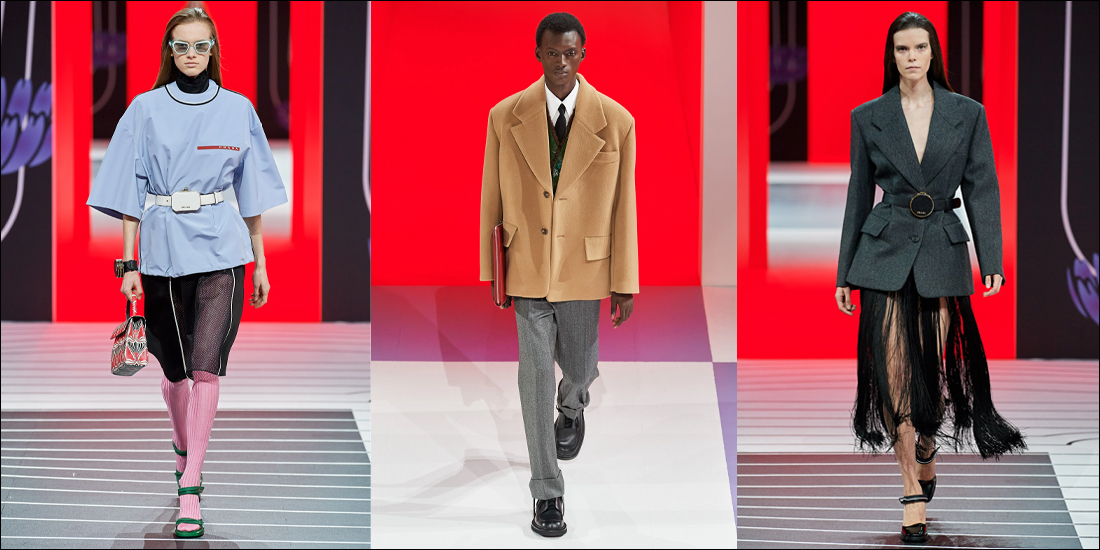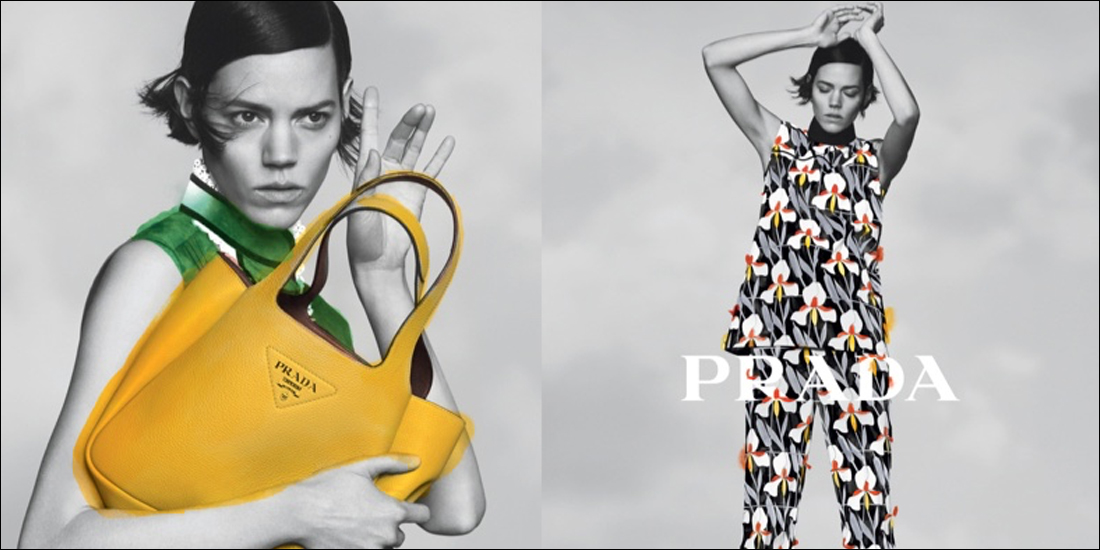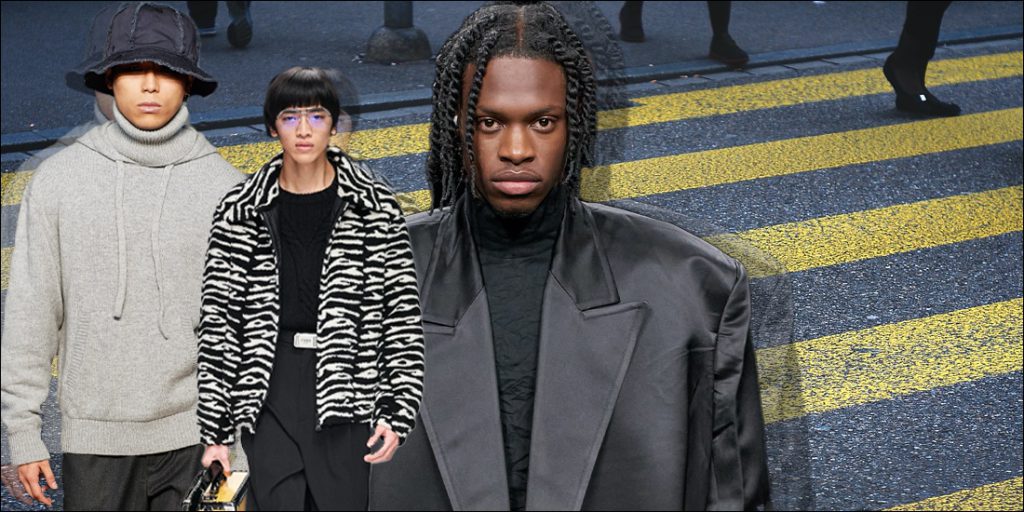Few century-old fashion houses can boast that they are still in the hands of the founding family. Prada does. But let’s start with the beginning of this Italian adventure at the antipode of its competitors. The starting point of the fashion legend is the most classic. It’s the beginning of the 20th century and two brothers, Mario and Martino Prada, start a small family business by opening a boutique in the exceptional Milanese gallery Vittorio Emanuele II. Specialists in leather goods, they transform exceptional leathers into pieces that are as elegant as they are unique. The talent and quality of Fratelli Prada were quickly noticed by a sophisticated clientele, and six years later the brand even became the supplier of the Royal House of Italy. Over the next fifty years, the business continued to grow steadily and could have continued to do so. But an avant-garde fury bearing the name Miuccia Prada fell on the House. With a degree in political science, a militant of the Italian Communist Party, a convinced feminist and a student of mime at Giorgio Strehler’s Piccolo Teatro, nothing predestined her to become a fashion designer… Except perhaps her name and still, the House is called Fratelli and her grandfather advocated patriarchy in business. Nevertheless, the founder’s granddaughter took the reins of the family business in the 1970s to lead it to international recognition.

The antipodes of Prada
With an atypical background, artistic sensitivity and fine intelligence, Miuccia Prada stands out from the artistic directors of other Houses. In fact, initially she did not feel creative at Prada and wanted to hire a professional for the job, but fortunately her husband Patrizio Bertelli, with whom she co-directs the business, eventually convinced her to design a few models herself. And her first success was the absolute antithesis of her grandfather’s work. Far from the sobriety of the noble leather that made the House famous at the beginning of the century, she imagined a nylon backpack! Much more than the creation of an iconic piece that is still in vogue, the Italian has led a true revolution in this material. Known in industrial circles, it has since then undeniably made its way into the fashion sphere, giving Prada the conviction that the notion of style is nothing more than a vast abstract playground. A collage of trends and perceptions that adapts to the needs of the times.

Since then, the multi-faceted personality and the immense cultural heritage of the designer have guided her brand towards new horizons and are reflected in pieces that are both classy and offbeat. Sometimes in elegance, sometimes in grunge, sometimes in kitsch and often in the marriage of good and bad taste, but always in the visionary effervescence of Madame Prada. This approach to style is directly deployed in the new lines: ready to wear for women at the end of the 80s, the line for men six years later, then Prada Sport in 1997, followed by entities dedicated to cosmetics, fragrances, accessories, and the list goes on and on. In total, no less than 15 collections per year are imagined by the Italian company! But while Prada is developing in these different areas and wants to seduce its customers, the brand’s objective is not to follow all the industry trends at all costs. The Prada-Bertelli duet declines collaborations with the major mass market brands, does not launch campaigns to seduce younger generations and refuses to use the work of artists to embellish their collections. “Prada is my own company, so I am responsible for the size it has grown to. But I don’t care whether I’m taking more market share or not. It doesn’t matter,” the designer told System magazine. On the other hand, it is precisely this nonconformist to the fashion world that pushes the brand on the path of creating new trends in style. The House likes to play with innovative techniques and revisit forgotten materials. What could be more singular than the magnets integrated into closures, the velcro fasteners on the chunky sneakers and the ostrich feathers on the 2017-18 fall-winter runway show? In her collections, geometric cuts play with sequins, minimalism meets the heap of different colors and patterns, streetwear blends with businesswomen’s chic, and the eccentricity of the fabrics completes the sobriety of the straight lines. The hyphen between the differences is the symbol of the Prada silhouette. And even beyond the clothing style, research and opposition can be read in everything. For example, perfumes. After Prada Amber’s classics with coppery notes, the House has released a praise for Prada Candy’s muscat and caramel nuances before creating the ode to mentholated freshness with Luna Rosa and its variations. What a heterogeneous broth!

Italian know-how and a unique vision of fashion in the air of time are the DNA of the century-old House. To reinforce this ability to reinvent itself and develop a unique blend of styles and genres while questioning industry standards, Miuccia Prada recently invited Belgian designer Raf Simons to join her in the creation of new collections. To be continued…
The amazing Miu Miu
If Prada is the work of her grandfather, Miuccia Prada also wanted to launch a brand of her own. A reference to her nickname, Miu Miu was born in 1993. If the brand has long been considered Prada’s little sister, it has a style all its own, a marriage that is at once offbeat, deviant and eccentric! Aimed at a younger clientele, free of dress codes, while being just as chic, the brand is quickly propelled by its muses, including Vanessa Paradis and Katie Holmes. While Miuccia Prada devotes most of her time to its creation, she also has another passion, which she shares with her husband: art. In the same year, 1993, the couple opened Fondazione Prada, which organized exhibitions in various locations, before moving to Milan in 2015. From Thomas Demand to Satoshi Fujiwara to David Byrne and Jean-Luc Godard, the list of artists is long.
Less present in the tabloid press than her colleagues, Miuccia Prada has been leading the Prada empire for more than 50 years already. Between intellectual art and contradictory inspirations, she has forged a real reputation in the fashion industry. Rewarded with the prestigious Outstanding Achievement Award, this multi-talented woman is surely already preparing a new revolution!






